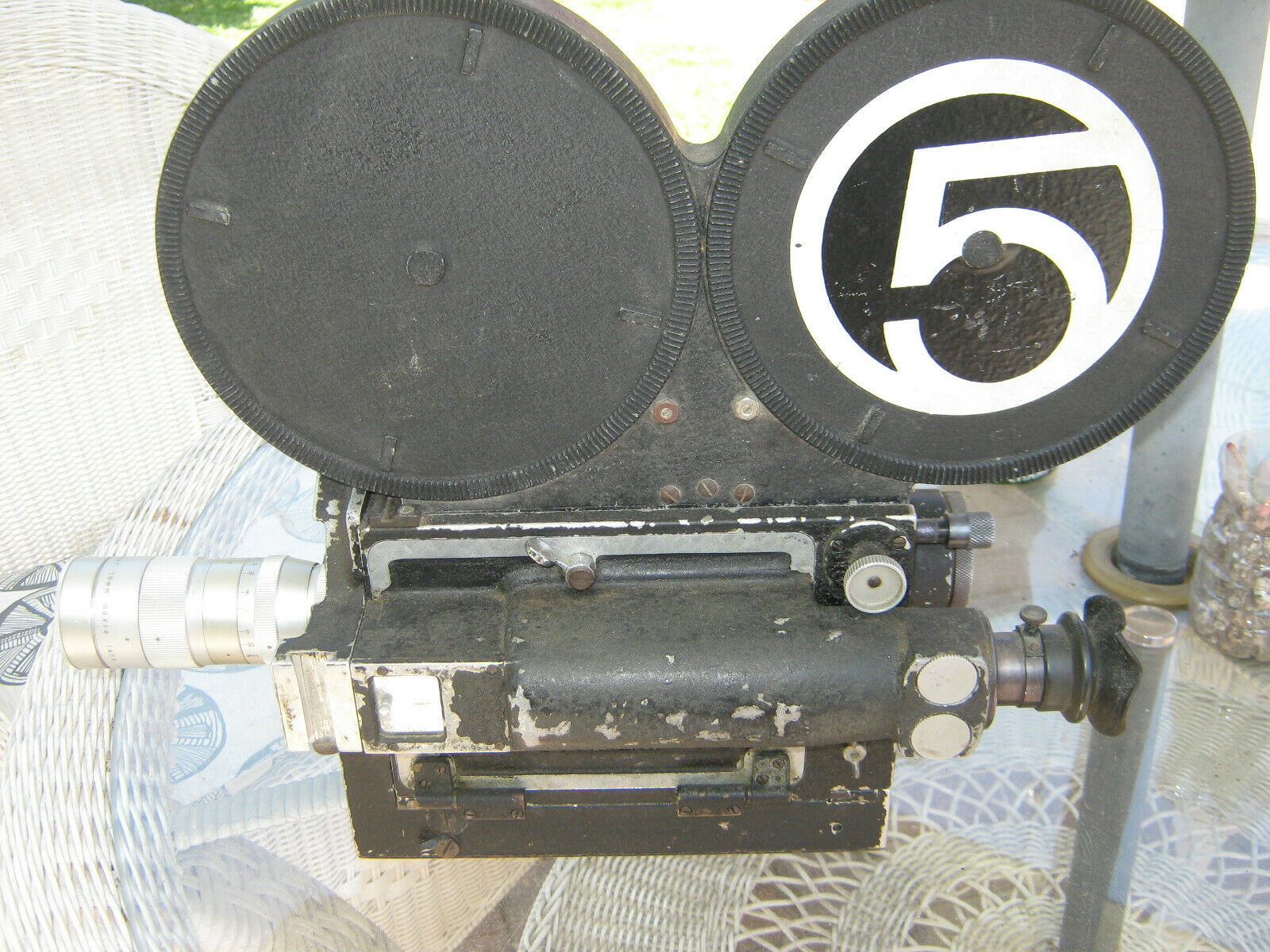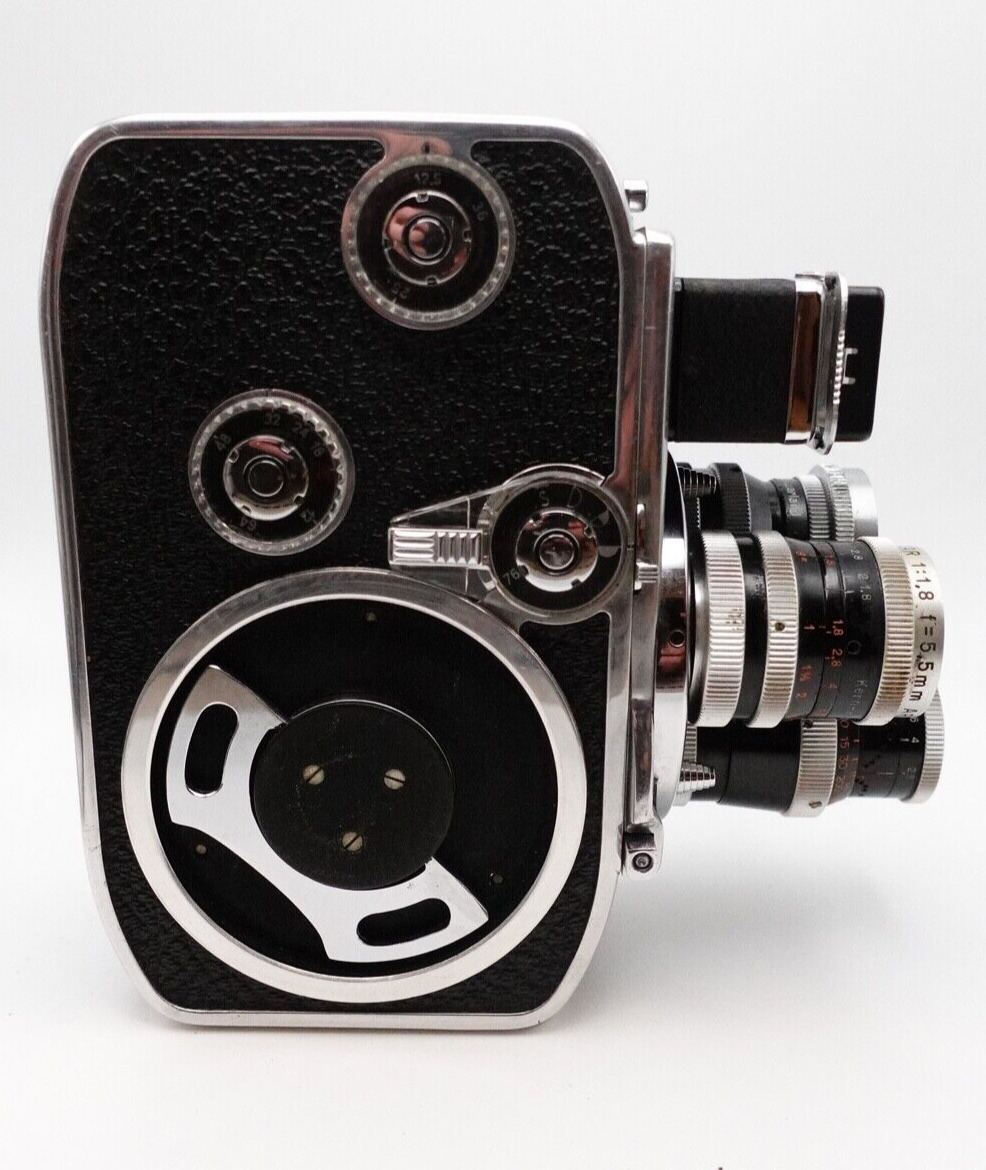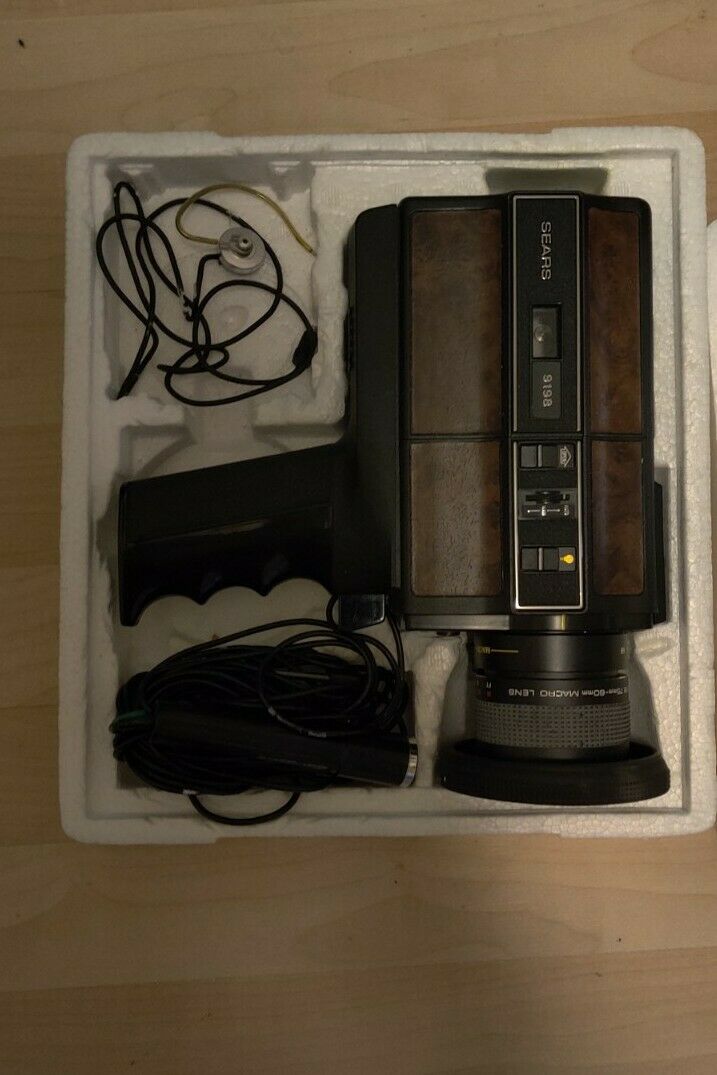-40%
Classic Hollywood MITCHELL 16mm Film STUDIO MOVIE CAMERA w/ rackover finder
$ 580.79
- Description
- Size Guide
Description
click to enlargeMitchell 16mm studio camera with rackover finder. Comes with two motors, plus two extra magazines (not shown). I don't know much about this camera.
NOTE: LENS IS NOT INCLUDED IN SALE OF THIS CAMERA BUT FOR DEMO PURPOSES ONLY.
Internal mechanism seems very clean and when I plugged the camera in, the motor ran smoothly. I have no other way to test this camera so I am selling it as-is.
Great display item or -- shoot with it.
Another ebayer wrote:
In layout and design, this camera is very much a slightly smaller version of a 1930's Mitchell standard. It has none of the features of those 35mm cameras with the exception of the dual pulldown requiring double perf film and the rackover focusing system requiring a sidefinder for shooting. It can be handcranked as all Mitchell's.
The 16Pro was not introduced until 1946 and did not start selling in any volume until 1948. This one is from late 1952.
According to Wikipedia
the Mitchell 16 is a variant of the Mitchell 35.
The original Mitchell 35mm rackover pin-registered studio camera, introduced in 1920 as a hand-cranked silent film camera. (The rackover device allowed the camera portion with its side-mounted viewfinder to be "racked over" upon its base by turning a handle on the rear of the camera base. By racking to the right, the operator would focus the lens upon a ground glass element seen through the viewfinder. By racking back to the left, the camera with its film would be brought into position to record the view of the now focused lens. The standard model came with a 4-lens turret, a matte box on rails mounted to the front of the camera, and options included a veeder film footage counter, behind the lens iris, 4-way adjustable frame mattes, automatic or hand dissolve, internal matte disk with 9 pre-cut mattes including 1/2 frame, circles, keyhole, binocular, and oval. Various improvements and available options on this model took place over subsequent years, including a frames-per-second film speed meter, addition of a side-view parallax finder with upright view, various electric motors including variable speed, constant speed, and synchronized motors. The talking pictures introduced in 1926 soon required this somewhat noisy camera to run quieter with the so-called "silent" film movements, and soon thereafter a higher-speed "silent" movement and follow-focus devices were made available.




















